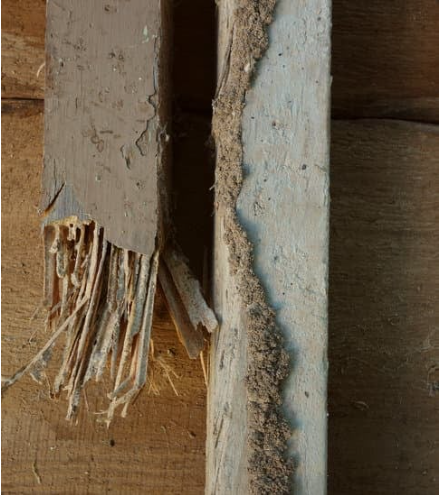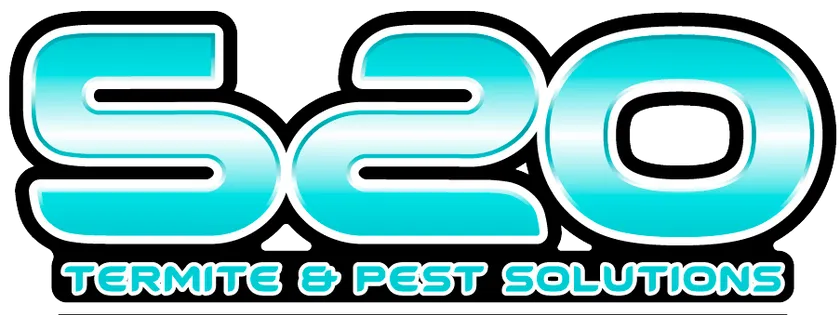
Phoenix homeowners face a significant threat from termites, making prevention a key aspect of home maintenance. Termites can cause extensive structural damage, often going unnoticed until the damage is severe. In Phoenix, where the climate is ideal for termites, proactive prevention is essential to protect your investment.
Understanding the importance of termite prevention can help protect your home from these destructive pests. By staying informed and taking proactive steps, you can significantly reduce the risk of termite damage and ensure the longevity of your home. For expert advice and tailored solutions, consider consulting with 520 Termite, a trusted provider in Phoenix specializing in termite prevention and control.
Understanding Termites
Types of Termites in Phoenix
Phoenix is home to three main types of termites: subterranean, drywood, and dampwood termites. Each type presents unique challenges and requires specific preventive measures.
Subterranean Termites: These are the most common and destructive termites in Phoenix. They build extensive colonies underground and invade homes through mud tubes they construct from the soil. Subterranean termites feed on wood, causing severe structural damage if left unchecked. They thrive in moist environments and often enter homes through cracks in the foundation.
Drywood Termites: Unlike subterranean termites, drywood termites do not need soil contact. They infest dry wood, such as structural timber, furniture, and hardwood floors. Drywood termites can go undetected for long periods because they live and feed inside the wood they infest. They create small, round holes to expel their fecal pellets, which can be a telltale sign of their presence.
Dampwood Termites: These termites prefer wood with high moisture content and are commonly found in areas with leaky plumbing or roofs. Dampwood termites are less likely to infest homes than subterranean or drywood termites, but they can cause significant damage if moisture issues are not addressed. They typically inhabit decaying wood and are larger than the other types of termites.
Termite Behavior and Life Cycle
Reproduction and Colony Formation: Termite colonies are organized with a caste system that includes workers, soldiers, and reproductive termites. The reproductive termites, or alates, swarm to mate and start new colonies. After finding a suitable location, the queen lays eggs, which hatch into larvae and develop into different castes based on the colony’s needs.
Feeding Habits: Termites feed on cellulose found in wood and other plant materials. Subterranean termites rely on moisture from the soil to digest cellulose, while dry wood and damp wood termites extract moisture from the wood they consume. Their constant feeding can weaken wooden structures, leading to costly repairs.
Signs of Infestation: Identifying termite activity early is vital for minimizing damage. Common signs include mud tubes on exterior walls, discarded wings near windows or doors, frass (termite droppings) resembling sawdust, and hollow-sounding wood when tapped. Regular inspections by professionals, such as 520 Termite, can help detect and address infestations before they cause significant harm.
Understanding these termite types, their behaviors, and life cycles is essential for effective prevention and control, especially in a termite-prone area like Phoenix.
Identifying Termite Infestations
Common Signs of Termite Activity in Phoenix
Mud Tubes: One of the most distinctive signs of subterranean termites is the presence of mud tubes. These pencil-width tubes are constructed from soil, saliva, and feces, allowing termites to travel between their underground nests and food sources above ground. In Phoenix, you might find these tubes along the foundation of your home, on walls, or within crawl spaces. They are a clear indication of an active termite infestation.
Discarded Wings: During swarming season, reproductive termites, or alates, leave their colonies to mate and establish new ones. After swarming, they shed their wings, which can often be found near windowsills, doorways, or other light sources. Finding these discarded wings inside your home is a strong signal that a termite colony may be nearby or already established within your property.
Hollow-Sounding Wood: Termites consume wood from the inside out, leaving a thin veneer on the surface. If you tap on wooden structures and hear a hollow sound, it is likely that termites have been feeding on the wood. This damage can compromise the structural integrity of your home, making early detection crucial.
Frass (Termite Droppings): Dry wood termites produce frass, which are tiny, wood-colored pellets that resemble sawdust or coffee grounds. These droppings are typically found near the infested wood. If you notice small piles of frass around your home, it is a strong indication of a dry wood termite infestation.
Inspecting Your Home in Phoenix
Areas to Check: Regular inspections are vital in Phoenix to catch termite activity early. Focus on the foundation, wooden structures, attics, and crawl spaces. These areas are prone to termite infestations due to their proximity to the ground and moisture.
Tools and Techniques for Thorough Inspection: Use a flashlight to check dark, enclosed spaces and a screwdriver or similar tool to probe wood for hollow spots. A moisture meter can help identify areas with high moisture levels that attract termites. Pay attention to any wood-to-soil contact points and inspect for signs of mud tubes, discarded wings, hollow wood, and frass.
For comprehensive inspections, consider hiring professionals like 520 Termite, who have the expertise and tools to detect and address termite infestations effectively. Regular professional inspections can help ensure your home remains termite-free, especially in the termite-prone environment of Phoenix.
Preventive Measures
Home Maintenance Tips for Phoenix Residents
Reducing Moisture Levels: Termites thrive in moist environments, making it essential to control moisture levels around your home. Fix any leaking pipes, faucets, or air conditioning units immediately. Ensure that your home’s gutters and downspouts are functioning properly to direct water away from the foundation. Installing a dehumidifier in basements or crawl spaces can also help maintain low moisture levels, creating an inhospitable environment for termites.
Proper Ventilation: Proper ventilation is crucial in preventing moisture buildup, which attracts termites. Ensure that your attic, basement, and crawl spaces are well-ventilated. Install vents or exhaust fans to promote air circulation and reduce humidity. Adequate ventilation not only deters termites but also helps prevent mold and mildew growth.
Sealing Cracks and Gaps: Termites can enter your home through even the smallest cracks and gaps in the foundation or walls. Regularly inspect the exterior of your home for any potential entry points and seal them with caulk or other appropriate materials. Pay special attention to areas where utilities enter the home, as these are common entry points for termites.

Landscaping Practices for Phoenix Homes
Keeping Wood and Mulch Away from the Foundation: Wood and mulch provide both a food source and a moisture-rich environment for termites. To reduce the risk of infestation, keep mulch, firewood, and other wooden materials at least 18 inches away from the foundation of your home. Consider using non-organic mulch materials, such as gravel or rubber, to further deter termites.
Maintaining a Gap Between Soil and Wood Structures: Ensure that there is a visible gap between the soil and any wooden parts of your home, such as siding or door frames. This prevents subterranean termites from gaining direct access to the wood. Concrete or metal barriers are used to create a physical separation between soil and wood structures.
Proper Drainage to Avoid Water Accumulation: Water accumulation near your home’s foundation can attract termites. Ensure that the ground around your home slopes away from the foundation to prevent water from pooling. Install French drains or other drainage systems to direct water away from your home.
Use of Termite-Resistant Materials
Types of Termite-Resistant Woods: Some woods are naturally resistant to termites, such as cedar, redwood, and teak. Using these materials in construction or renovations can help reduce the risk of termite damage. These woods contain natural oils and chemicals that deter termites from feeding on them.
Benefits of Using Treated Lumber: Treated lumber is wood that has been infused with chemicals to make it resistant to termites and decay. It is commonly used in construction for framing, decking, and other outdoor structures. The treatment process makes the wood unpalatable to termites, providing an additional layer of protection. Using treated lumber for any wood-to-soil contact points is particularly effective in preventing termite infestations.
Implementing these home maintenance tips, landscaping practices, and using termite-resistant materials can significantly reduce the risk of termite damage. For tailored advice and professional services, consider consulting with 520 Termite to ensure your home is adequately protected against termites.
Chemical and Non-Chemical Treatments
Chemical Treatments for Phoenix Termites
Soil-applied Barriers: One of the most effective methods to protect your home from termites is the application of chemical barriers in the soil around your home’s foundation. These barriers, typically containing termiticides, create a protective zone that kills termites on contact, preventing them from entering your home. This method is particularly effective against subterranean termites common in Phoenix.
Wood Treatments: Applying termiticides directly to wood can help protect your home from termites. These treatments penetrate the wood, making it toxic to termites and preventing infestations. This method is especially useful for treating wooden structures and furniture that are at risk of termite attack.
Termite Baits and Stations: Termite bait systems involve placing bait stations around your home’s perimeter. These stations attract termites, which then carry the bait back to their colony. The bait contains a slow-acting toxin that spreads throughout the colony, eventually eliminating it. This method is effective for controlling both subterranean and drywood termites.
Non-Chemical Treatments
Physical Barriers: Physical barriers such as stainless steel mesh or sand barriers can prevent termites from accessing your home. These barriers are installed during construction and act as a physical obstruction, making it difficult for termites to enter.
Biological Control Methods: Biological control involves using natural predators, such as nematodes, to control termite populations. Nematodes are microscopic worms that seek out and kill termites. This eco-friendly method can be an effective part of an integrated pest management strategy.
Combining chemical and non-chemical treatments provides a comprehensive approach to termite control. For expert advice and professional treatment options, consult with 520 Termite to protect your home effectively.
Professional Pest Control Services in Phoenix
When to Call a Professional in Phoenix
Severity of Infestation: If you notice significant signs of termite activity, such as extensive mud tubes, large amounts of frass, or widespread hollow-sounding wood, it’s time to call a professional. Severe infestations can cause structural damage that requires immediate attention to prevent costly repairs.
Limitations of DIY Methods: While DIY methods can help in early detection and minor infestations, they often fall short of effectively eradicating a well-established termite colony. Professionals have the expertise, tools, and treatments necessary to address severe infestations comprehensively and prevent future issues.
Choosing the Right Pest Control Company in Phoenix
Certification and Licensing: Ensure the pest control company you choose is certified and licensed to operate in Phoenix. This guarantees that they meet the industry standards and are knowledgeable about the latest termite control methods.
Experience and Reputation: Look for a company with a proven track record in termite control. Read reviews and ask for references to gauge their reputation. An experienced company is more likely to provide effective and reliable services.
Types of Treatments Offered: Different infestations require different treatments. Choose a pest control company that offers a variety of treatment options, including chemical and non-chemical methods, tailored to your specific needs. A comprehensive approach ensures thorough termite control and prevention.
For trusted and effective termite control services in Phoenix, consider consulting with 520 Termite. Their expertise and tailored solutions can help protect your home from termite damage.
Ongoing Monitoring and Maintenance
Regular Inspections in Phoenix
Frequency of Inspections: Regular inspections are essential for early detection of termite activity. In Phoenix, it is recommended to have your home inspected for termites at least once a year due to the favorable climate for termite infestations. More frequent inspections, such as bi-annual checks, can provide even greater assurance, especially if your home has had previous termite issues.
Areas to Focus on During Inspections: Focus on inspecting the foundation, wooden structures, attics, crawl spaces, and any areas where wood contacts soil. Look for signs of termite activity, such as mud tubes, discarded wings, hollow-sounding wood, and frass. Pay particular attention to areas with high moisture levels, as termites are attracted to these conditions.
Maintaining Treatment Barriers
Ensuring Effectiveness of Chemical Barriers: Chemical barriers can degrade over time due to soil movement, weather conditions, and other environmental factors. Regularly checking these barriers ensures they remain effective in deterring termites. If you notice any breaches or areas where the barrier might be compromised, contact a professional for an assessment.
Reapplying Treatments as Needed: Termite treatments are not always permanent. Depending on the type of treatment used, you may need to reapply chemical treatments periodically to maintain protection. Follow the recommendations of your pest control professional regarding the frequency of reapplications to ensure continuous protection.
For ongoing monitoring and maintenance, consult with 520 Termite. Our expertise in Phoenix termite control ensures that your home remains protected through regular inspections and effective treatment maintenance.
Keeping Your Home Protected
Protecting your home from termite damage in Phoenix involves understanding the types of termites common in the area, recognizing signs of infestation, implementing preventive measures, and choosing appropriate treatments. Regular home maintenance, such as reducing moisture levels, ensuring proper ventilation, and sealing cracks, plays a crucial role in deterrence. Landscaping practices, like keeping wood and mulch away from the foundation, maintaining soil-wood gaps, and ensuring proper drainage, further reduce the risk.
Proactive measures are essential to prevent termite infestations and minimize potential damage. Regular inspections and maintaining treatment barriers help ensure early detection and ongoing protection. Staying vigilant and addressing issues promptly can save you from costly repairs and structural damage.
By following these guidelines and consulting professionals like 520 Termite, you can effectively protect your home from termites. Stay proactive, informed, and vigilant to keep your home safe from termite damage.

